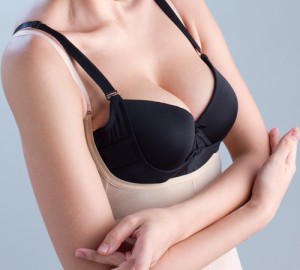
What is the Difference Between Saline Vs Silicone Gel
Breast augmentation is a highly personalized procedure. You will have many decisions to make that will help determine your post-operative appearance, and one of those is whether to select silicone gel or saline implants. Both implant types are safe and have differing positive characteristics that may appeal more to a certain patient.
Saline Implants
Saline breast implants are filled with saline solution, which is effectively salt water. Saline implants have a slightly firmer feel, and can be filled by the surgeon at the time of insertion to allow for a flexible fill volume. The ability to place the implant and then fill it means the surgeon can make a smaller incision. Saline implants also have a lower rate of hardening than silicone.
If a saline implant ruptures or begins leaking, the patient will notice fairly quickly. The saline is absorbed harmlessly into the body, and the loss of volume will result in noticeable wrinkles, ripples, and loss of size and shape of the breast. The F.D.A. has ruled saline implants to be safe and effective, and has approved them for use in women 18 years or older.
Silicone Gel Implants
Silicone implants are filled with a silicone gel. The gel has a thick and sticky texture that resembles the texture of natural human fat, which means that some patients find that they feel more natural than saline. Women with smaller breasts may find that the gel implant gives them a more natural-appearing breast than a saline implant (especially if the woman also has thin skin).
One of the concerns associated with silicone implants is that if they do rupture or leak, it can be hard to detect. Unlike saline (which is absorbed into the body if the implant ruptures), silicone is not absorbed into the body. There is no evidence that a leaking or ruptured silicone implant will cause health problems, but it may eventually cause pain or a change in breast shape. Routine MRI scans and breast exams after surgery should show any rupture that has occurred. The F.D.A. has ruled silicone implants safe and effective, and has approved them for unrestricted use for women 22 years of ago or older.
Consultation
As you can see, both saline and silicone gel implants have their positive characteristics and their potential drawbacks. Dr. Nukta will review all of these details with you during your consultation to help you make an informed decision that will give you the most desirable post-operative appearance.
Visit our breast augmentation page to see before and after photos, read FAQs and more.
If you’re interested in coming into our Northern Virginia plastic surgery practice for a consultation, call (703) 574-2588 or click here to set up a consultation.
